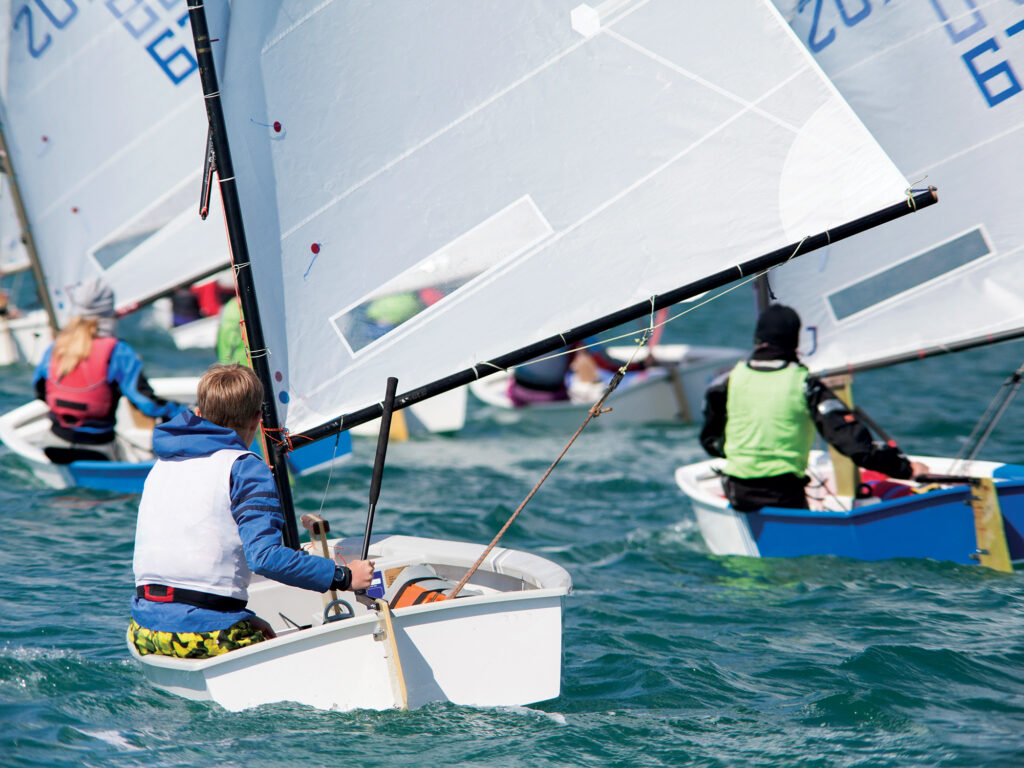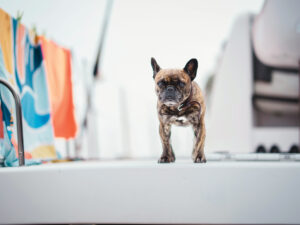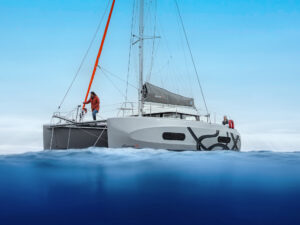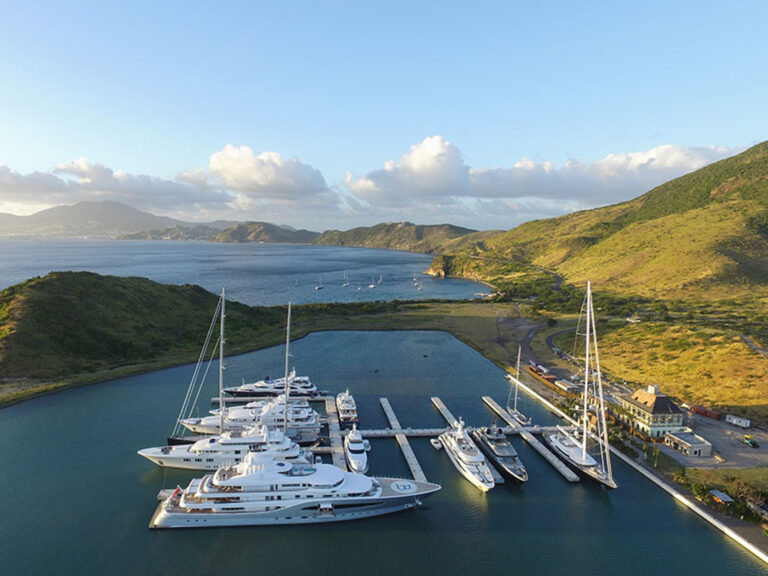
I’ll admit it: I used to think of “cruising” and “competition” as oil and water. You either race, chasing podium finishes and line honors, or you cruise, sipping sundowners in some paradisiacal anchorage. One approach was about tactics and trimming; the other was about slowing down and soaking it all in. For me, the latter approach always ruled the day. Then I met a new breed of sailors who blur the lines between the two.
Take my friend Cate, for example. She’s a lifelong bluewater boat bum with an old-school beer-can-racing pedigree. Put her on a passage, and it’s as if she’s back on the racecourse. While the rest of the crew are playing Rock, Paper, Scissors for who gets the next galley cleanup, she’s monitoring weather models, tweaking trim and picking the fastest route—not because she has to, but because she can. She gets a kick out of shaving hours off a passage, logging big-mile days, and fine-tuning a boat for speed and efficiency. To Cate, cruising is the competition. The opponents? The ocean. Herself. Her own limits.
As one of the crew tells it, on a recent hop from the Bahamas to the Chesapeake, the forecast called for a steady breeze and a relatively mellow ride, but Cate was in full optimization mode. “If we can hold this angle, we’ll stay ahead of the shift,” she muttered as she adjusted the traveler. “Think we can crack 200 miles in 24 hours?”
They didn’t, but the mindset was infectious. Instead of just biding time between watches, they found themselves checking boatspeed, tweaking sails, and scanning for cloud lines or puffs that might signal a pressure change. It wasn’t about winning anything; it was about learning, improving, and making the most of the conditions they had.
That’s the heart of competitive cruising. It’s not about crossing a finish line first (though plenty of cruisers now join regattas and rallies to put their skills to the test). It’s about pushing yourself and your boat, finding little ways to sail smarter, sail faster, and sail better.
The trend is undeniable. Performance cruisers and high-tech multihulls are surging in popularity. More offshore rallies are adding competitive divisions. And casual sailors who once thought of racing as “too serious” are starting to see the appeal of dialing in their boats, logging bigger passages, and embracing the challenge.
Some sailors make this switch naturally. Take the late cruising legend Larry Pardey, for instance. Herb McCormick recounts an anecdote that speaks to Pardey’s philosophy. A sailor once asked Pardey why he and his wife, Lin, despite being quintessential cruisers, often pushed their boats so hard. Pardey’s response? “Because someday, when it really matters, I want to know exactly what my boat and I are capable of.” It’s a sentiment that has stuck with generations of sailors. By sailing at our best when conditions are in our favor, we prepare ourselves for the moments when they’re not.
Pardey may not have raced around the buoys in the traditional sense, but he was low-key among the most competitive cruisers that sailing has ever known. And his dedication to efficiency and seamanship was unmatched. That’s a lesson McCormick recalls learning firsthand when he flubbed a final jibe at the end of a regatta in New Zealand. The race may have been over, but for Pardey, the standard never wavered: If you’re going to sail, do it well, because anything less is a disservice to yourself and your boat.
That mindset is what defines competitive cruising, a term that seems to be taking hold as more sailors embrace the idea that cruising and performance aren’t mutually exclusive. Some sailors scratch that itch by entering regattas or rallies. Others, like the modern performance-cruiser crowd, do it by chasing faster passage times, optimizing sail trim, and leveraging the latest technology to cover more miles under sail. At its core, competitive cruising is about the same thing that has always made
sailing special: learning.
For some sailors, that means shaving days off an ocean crossing. For others, it’s about handling a spinnaker better in a breeze. And for a few, like my friend Cate, it’s about chasing the perfect passage—not because there’s a trophy at the end, but because every challenge is an opportunity to improve.








